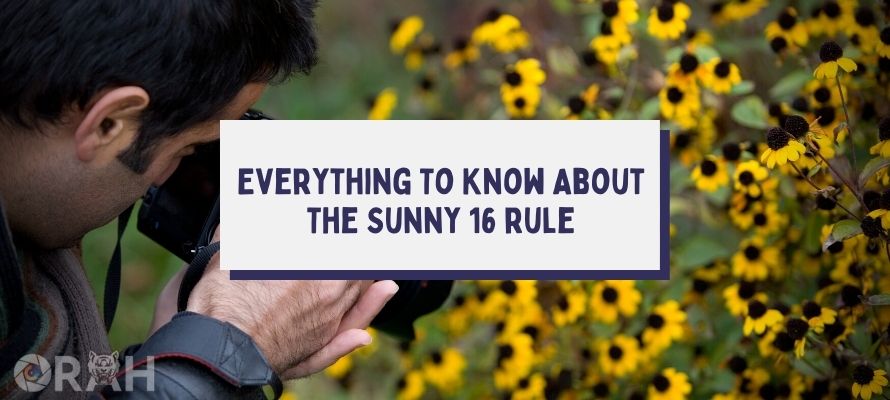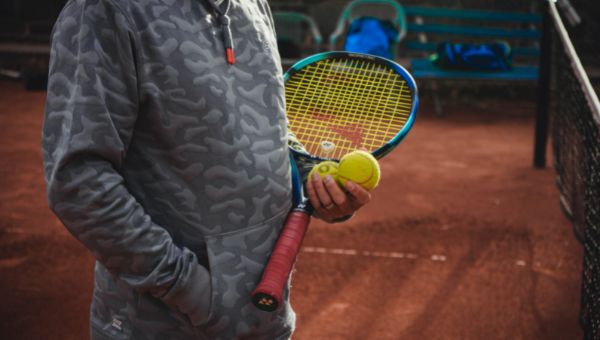
When you are talking about photography, you are going to come in contact with all sorts of rules that you might have to use. There is the golden ratio, the Sunny 16 rule, and so many else.
However, the thing that most people do not know is that while having an understanding of these rules is an impressive and important thing is that even if you do not follow them, having an understanding of these rules could help you.
I know so many photographers who do not know the rules by their name but follow everything that is already mentioned in the said rules. That is why, today, we are going to break down the Sunny 16 rule, so you can have a better understanding of what you are dealing with.
What Is The Sunny 16 Rule In Photography?
Now, judging the rule in hindsight might result in some confusion, and that is fine since almost every one of us goes through the process, but to be honest, the Sunny 16 rule is a lot easier and simpler than one might think, in the first place.
So, for those wondering, the Sunny 16 rule is a way to correctly measure the exposure during daylight without having a meter at hand.
The basic rule of thumb mentions that if you have a clear, sunny day, then your aperture should be at f/16; whatever ISO you are using, your shutter speed will be the reciprocal value of that ISO. (ISO X = 1/X seconds shutter speed)
Confusing? Don’t worry. For instance, if your ISO is 200 at f/16, then your shutter speed will be 1/200th of a second. If your ISO is 100, then your shutter speed would be 1/100th of a second.
Now that we have made it clear, it should be a lot easier, to be honest, and you should not be having an issue developing a proper understanding.
Is The Sunny 16 Rule Effective?
The next thing that we are going to talk about is whether the Sunny 16 rule is effective or not, and to be honest, it depends on what you are trying to understand.
I have seen a lot of photographers talk about how it is not an optimal way of getting or measuring a good exposure, and the picture that you are trying to take ends up looking over-exposed or underexposed. Therefore, Sunny 16 is not always optimal.

If you really want to use the rule, I would still suggest that you do not rule out using things like the built-in meter in the camera, as well as a histogram that you can look at.
These advanced technologies, in tandem with the Sunny 16 rule, can easily go ahead and give you the results that you are looking for.
This is something that almost all photographers believe in and do so actively.
Sunny 16 Rule Chart
Now that you guys know about the Sunny 16 rule and how things work, it is better and more important to have a proper understanding of every other aspect. After all, there is no point if you are just remembering the rule but not following it, right?
Thankfully, I have this handy chart for you that you can use to make the most out of this experience, and this is going to help you a lot.
| Change In Aperture | Stop Difference | Change In Shutter | Stop Difference |
|---|---|---|---|
| f/16 | 0 | 1/200 @ISO200 | 0 |
| f/11 | +1 stop | 1/400 @ISO200 | -1 stop |
| f/8 | +2 stops | 1/800 @ISO200 | -2 stops |
| f/5.6 | +3 stops | 1/1600 @ISO200 | -3 stops |
| f/4 | +4 stops | 1/3200 @ISO200 | -4 stops |
| f/2.8 | +5 stops | 1/6400 @ISO200 | -5 stops |
If you are trying to understand the Sunny 16 rule, this actually helps in having a proper control over what you are looking forward to doing. It is not impossible to understand but works really well.
Again, this is going to vary from person to person, so if you have some other understanding of the chart or you want to make some difference, that is entirely possible and up to you.
Sunny 16 Rule: Why Should You Use The Sunny 16 Rule?
There are a number of times that we have been asked about the use of the Sunny 16 rule and how people can use it, or more importantly, why should they use it, and to be honest, the answer is a lot simpler than you might think.

If you are in situations where you do not have access to your entire camera gear, and you cannot measure the exposure the way you want to go ahead and do it, the Sunny 16 rule actually helps you achieve just that.
Sure, for newcomers, it is going to take some time getting used to, but once you have mastered it, then it really should not be an issue for anyone because mastering it becomes all the easier, and that is what people want, to begin with.
How Can You Apply The Sunny-16 Rule When Taking Photographs?
As far as the application of the Sunny 16 rule when taking photographs is concerned, it is not something that is difficult at all.
Given the information that we have shared with you above, that should be more than enough to guide you on what you should be doing and should not be doing. It is never anything that complicates the process, and in most of the cases, it is rather easy.
However, aside from just relying on the Sunny 16 rule, I am also going to suggest that you are looking into something that is not going to complicate anything.
You can use your camera’s metering system as well as the histogram to get the pictures and the results you have been after. All of this is rather simple and easy to understand in almost all the scenarios.
How Can You Use The Sunny 16 Rule When It’s Not Sunny?
Another question that has been around for the longest time is just what you should be doing when it is not sunny outside. Can you still use the Sunny 16 rule?
Honestly, after some time experimenting with these things, it has become a lot easier to understand that this is not at all confusing for anyone, and you would be more than okay without using the rule at all.
However, you have to be fully aware of what you are doing whenever you are taking the pictures because we really do not want things to get out of hand at this point.
Related guides:
- What is exposure compensation? How to master it?
- What is high-speed sync flash? Why use it?
- What is the focal length in photography?
- What is focus breathing?
Frequently Asked Questions (FAQs)
Q1- Is the Sunny 16 Rule accurate?
Answer: Honestly, modern photographers tend to stay away from the rule. Why? Because there are better tools within the camera and the equipment that is being used that using Sunny 16 does not make a lot of sense anymore.
Q2- Does Sunny 16 work on a digital camera?
Answer: Yes, it can work on any camera that allows you to have control over the manual functionality of the camera.
Q3- How can I learn Sunny 16?
Answer: Learning the Sunny 16 is not something that is going to be complicated or difficult, to be honest. You just have to be sure that you are looking at the rule and how it works, and you are good to go.
Wrap-Up:
Simply put, if you are looking to learn more and more about the sunny 16 rule, then this entire article is for you because it is going to teach you all you need to know about this rule, and of course, this would make your experience infinitely better.
